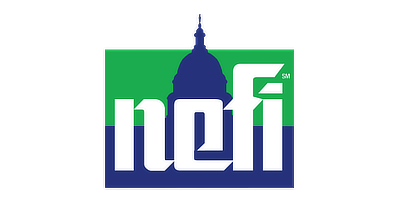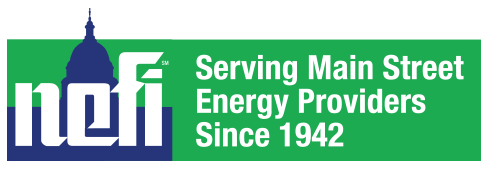The Notice of Proposed Rulemaking Sets Forth Prevailing Wage and Apprenticeship Requirements for Federal Tax Deductions for Commercial Building Efficiency Improvements and Certain Other IRA Tax Incentives
The Internal Revenue Service (IRS) issued a notice of proposed rulemaking (NOPR) that clarifies the process for commercial buildings to qualify for larger tax deductions for efficiency improvements under Section 179D of the Internal Revenue Code. The Inflation Reduction Act of 2022 (IRA) modified and expanded this deduction. Unlike most other tax incentives under the IRA, the Section 179D deduction is permanent and will not expire.
This article provides a brief overview of the proposed rule and its effect on the 179D commercial building tax deduction as amended by the IRA. As with any tax or legal matter, NEFI strongly recommends that members consult with a qualified tax or legal professional regarding the implications of this new law on their business. It is important to note that the IRA's prevailing wage and apprenticeship requirements do not apply to tax credits for residential energy efficiency improvements (Section 25C) or "renewable home energy property" (Section 25D), or the new rebate programs for residential electrification or whole home efficiency improvements.
Section 179D Commercial Building Efficiency Tax Deduction
To qualify for the IRC §179D tax deduction, a commercial building owner must install efficient energy and power systems and components that reduce total energy costs by at least 25%. This may include interior lighting; HVAC and hot water systems; and building envelope components, such as roofing, windows, and insulation. Energy cost reductions are measured using ASHRAE Reference Standard 90.1 (IRS guidance available here). Eligible properties include commercial, industrial, and office buildings; multifamily buildings that are four stories or higher; and schools, hospitals, churches, and other buildings owned by tax-exempt entities.
Beginning January 1, 2023, the amount of the 179D deduction is based on a sliding scale of $0.50-$1.00 per square foot (adjusted annually for inflation), based on the total percent (%) reduction in the commercial building's energy use above 25%. This amount increases five-fold to $2.50 to $5.00 per square foot if the IRA's prevailing wage and apprenticeship requirements are met by contractors, subcontractors, or any other laborer(s) hired by the taxpayer to carry out related work. Click here for IRS guidance on the Section 179D tax deduction for commercial building efficiency.
Section 48 Business Energy Investment Tax Credit
"Renewable" energy systems including solar, wind, geothermal, and battery storage technologies installed in a commercial building fall under the IRC §48 Business Energy Investment Tax Credit (ITC). The ITC starts at 6% and increases to 30% if the below prevailing wage and apprenticeship requirements are met. It also offers a 10% bonus for using U.S. made products, and another 10% to 20% for work done in certain vulnerable communities. It is important to note that building owners may "stack" the ITC on top of the 179D deduction. Also note that installation of air source heat pumps and systems that utilize renewable liquid heating fuels are not included in the ITC but may qualify as HVAC system upgrades for the purposes of the 179D deduction.
Click here for more information on the ITC. The IRS has also published a detailed information page for businesses, non-profits, and other entities interested in tax credits for solar energy investments, available here.
Proposed Rule for Prevailing Wage & Apprenticeship Requirements
The IRS notice of proposed rulemaking outlines the labor requirements that must be met for the commercial building to qualify for higher 179D deduction amounts. The proposed rule adopts wage determinations and guidance from the Davis-Bacon Act, a federal law that requires businesses to pay local prevailing wages on public works projects. In short, workers employed by the contractor, subcontractor, or taxpayer to do work related to the 179D deduction must be paid wages at rates that are not less than the prevailing rates determined by the U.S. Department of Labor in accordance with the Davis-Bacon Act for the type of work performed in the geographic area of the facility. Click here for more information on the David-Bacon Act.
The proposed rule also details what apprenticeship requirements must be met for the building to obtain the higher 179D deduction amounts. If the proposed rule is finalized, a minimum percentage of total work hours must be performed by qualified registered apprentices. The percentage increases over time: 10% for projects that started before 2023, 12.5% for projects that started in 2023, and 15% for projects starting in 2024 or later.
The proposal includes extensive recordkeeping requirements including wage determinations used, actual pay and hours for each worker classification, any back wages paid, and total apprentice hours. Click here to read the entire proposed rule or submit comments (due by October 30, 2023). The IRS also published a list of frequently asked questions (available here).
Prevailing wage and apprenticeship requirements must be met by taxpayers to realize "bonus" credits or deductions for twelve different tax incentives under the Inflation Reduction Act. This includes the new Section 45Z "clean fuels production credit," which replaces all renewable and alternative fuel tax credits including the biodiesel and renewable diesel blender's tax credit beginning January 1, 2025. A complete list of federal tax incentives affected by proposed rule is included in the IRS summary document, available online here.

 admin - 01:58 pm -
October 12th, 2023
admin - 01:58 pm -
October 12th, 2023 








